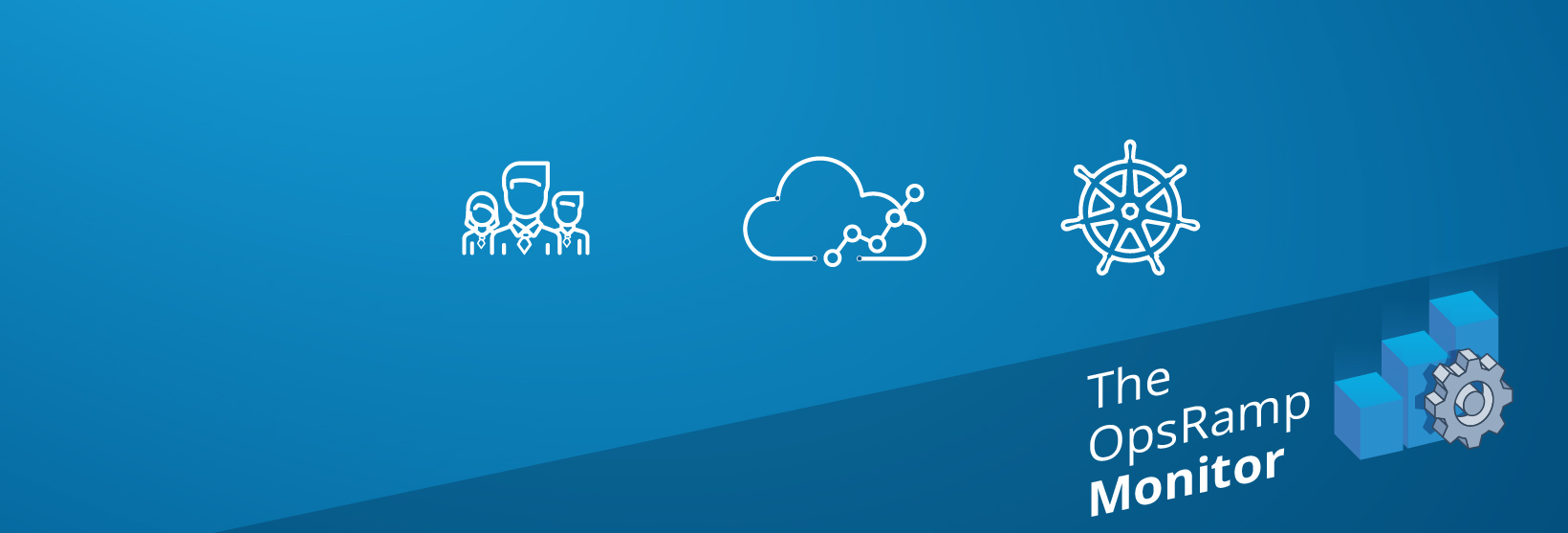Top Weekly Reads in IT I&O
The world of IT operations management, DevOps, AIOps, and cloud is always changing. That’s why there’s The OpsRamp Monitor: OpsRamp’s top weekly review of interesting developments and emerging trends in digital operations. Subscribe to our blog for the latest and greatest. And stay on top of everything Ops.
CIOs eat business challenges for breakfast. Everyone wants to know what the CIO is thinking and doing. After all, these brave men and women are leading the charge of marketplace innovation and business productivity. They’re being held increasingly accountable to drive revenues. CIOs are therefore focusing more time on identifying opportunities for competitive differentiation over functional tasks like cost control, according to the 2020 State of the CIO Report, by IDG Research.
“As part of their increasingly business-directed charter, CIOs are prioritizing efforts to align IT initiatives with business goals (44 percent), implement new systems and architectures (39 percent), lead change efforts (34 percent) and drive business innovation (34 percent),” IDG reports. Also of note, the percentage of CIOs reporting to the CEO jumped from 43 to 47. And, nearly half of survey respondents (46 percent) self-identify as a transformational CIO. Editorial note: Wouldn’t it be a bit of career suicide to not self identify this way?
What’s hot and what’s not in the cloud. CRN published its list of the 20 Coolest Cloud Management and Migration Companies—which, by the way, included OpsRamp. Cool is also hot, no? If you’re AWS, Azure, Google, Alibaba, IBM, Dell/VMWare, HPE, Oracle, Cisco, SAP, Salesforce, Adobe or Workday you’re definitely hot, at least according to ZDNet’s Larry Dignan who’s been covering IT and cloud topics for a very long time.
Dignan gives a respectful nod to legacy (that word!) vendors for their expanding role in hybrid and multi-cloud environments: “The likes of IBM, Dell Technologies, and HPE aim to become the glue between multi-cloud deployments that feature a blend of private and public clouds as well as owned data centers. After all, most enterprises are looking at a multi-cloud strategy.”
And what’s not so hot? Conversely, Christopher Tozzi, a reporter from Data Center Knowledge, writes that multi-cloud is losing steam, citing complexity. He also paints a grey picture of standalone PaaS platforms (the big 3 clouds have it covered now); serverless computing (only good for certain workloads); and OpenStack (Kubernetes is taking over).
Kubernetes 101. Speaking of the leading container management and orchestration technology, it won’t be a surprise if we start seeing an Intro to Kubernetes course being offered in general ed at colleges and universities all over the country. Kubernetes is one of the hottest tech skills right now, according to this article from job site Indeed and others.
“Indeed data shows that in the four-year period between October 2015 and October 2019, the share of Kubernetes jobs per million grew by 2,141.03% while the share of Kubernetes job searches increased 2,125.66%.” In case you’re not good at visualizing extremely large numbers, the graph on this growth is an Everest ascent. The roles that most typically leverage Kubernetes skills are DevOps engineer, software and cloud engineers, and full-stack developers, according to Indeed.
SLOs v SLAs. If you work in IT operations, you probably know the difference between a service level objective and a service level agreement. But just in case, this vendor blog purports to set the record straight: “SLOs are always set to be more stringent than any external-facing agreements you have with your clients (SLAs), they provide a safety net to ensure that issues are addressed before the user experience becomes unacceptable.”
The Google Cloud Blog adds considerable detail to the discussion, with some notes of caution: “Keep in mind that the more reliable the service, the more it costs to operate. Define the lowest level of reliability that you can get away with for each service, and state that as your SLO. Every service should have an availability SLO—without it, your team and your stakeholders cannot make principled judgments about whether your service needs to be made more reliable (increasing cost and slowing development) or less reliable (allowing greater velocity of development).”
Next Steps:
- Learn about the OpsRamp Platform.
- Watch a 20-minute demo of OpsRamp.
- Subscribe to the OpsRamp Blog!






